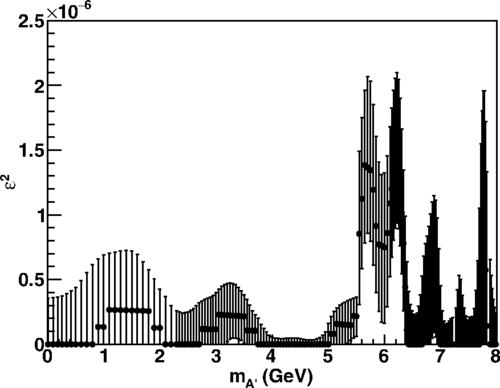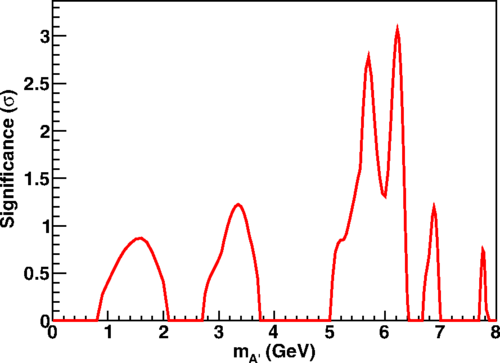Detecting Dark Matter: Dark Photons
Introduction
Recently, I read an article discussing the current lack of success we have had detecting dark matter. I wanted to take this opportunity to take a look at a recent experiment which sought to detect dark photons. These dark photons are considered “dark” because they are unlike regular photons and are not related to the electromagnetic force. Instead, their existence would require the existence of entirely new force to facilitate the interactions between light and dark matter. Although the experiment proved to be inconclusive, it could potentially suggest the existence of dark photons in a larger and more detailed study.
Before we begin I would like to say that I am not a physicist and that the following analysis is my hopeful interpretation of the experiment.
The Experiment
In February of 2017 a group of scientist published their analysis based on some of the data collected from the BABAR experiment. They used the data to detect dark photons through analyzing the events resulting from the collision of an electron and a positron. They theorized that although the resulting wavelength would be “invisible” they could still detect a change in the system's mass (through high-energy photon) accompanied by a decrease in the system's overall momentum and energy. Below are some of the graphs from the study.
The first graph overlays the mixing strength squared from the experiment (the black dots) over the he maximum-likelihood values of the mixing strength squared.
Below is a graph from the study depicting the relative significance of the data across the mass’ range of mA’ ≤8 GeV. As you can tell there are multiple regions where the gains in significance, which correspond changes in the observed mixing strength squared!
Unfortunately, as I pointed out earlier this data is not conclusive when compared to either its Bayesian of Profile-likelihood limits. Hopefully, with more knowledge on the subject or with more detailed predictions we can reduce their upper limits and maybe even use a similar method to conclusively observe dark photons!
--
If you have any questions or know anything you would like to add feel free to do so in the comments! Or if you have any suggestions on how I can improve I would love to hear them!
If you enjoyed my content, please consider upvoting to help others find my content or even follow me if you would like to hear more!
Work Cited:
https://www.sciencealert.com/data-analysis-reduces-limits-on-dark-matter-photon-energies
https://journals.aps.org/prl/abstract/10.1103/PhysRevLett.119.131804


Just one precision: the babar experiment is over for many many years now, but people for the babar collaboration are still analyzing data. The dark photon mass, if this guy exists, is expected to be pretty small, which makes it interesting for BaBar.
Maybe can you add a link to the arxiv version of the paper, that is freely available, in your references (here)?
Thanks for the help!
@minnowpond has voted on behalf of @minnowpond.
If you would like to recieve upvotes from minnowponds team on all your posts, simply FOLLOW @minnowpond.
@steem-marketing has voted on behalf of @minnowpond.
If you would like to recieve upvotes from minnowponds team on all your posts, simply FOLLOW @minnowpond.
@originalworks
The @OriginalWorks bot has determined this post by @thequantumknight to be original material and upvoted(1.5%) it!
To call @OriginalWorks, simply reply to any post with @originalworks or !originalworks in your message!
@mrainp420 has voted on behalf of @minnowpond.
If you would like to recieve upvotes from minnowponds team on all your posts, simply FOLLOW @minnowpond.